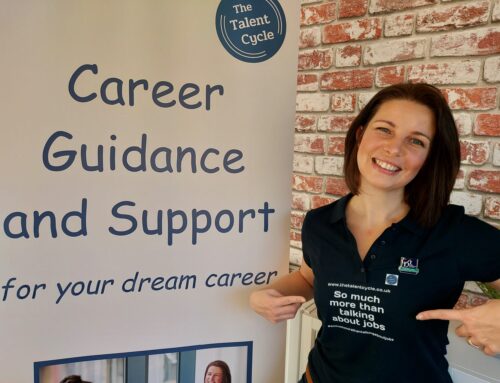One of the key principles that should underpin a good careers programme is the idea that students’ career learning should be driven by the needs of the young person rather than those of the school or college. Another is that your careers programme should recognise the differences between students while seeking to support all their aspirations, even where these might be difficult within an unequal society. In this article we are going to take you through how best to address the needs of all of your students.
Taken from The Careers Leader Handbook by David Andrews and Tristram Hooley.

Stereotyping, bias and injustice
It is important to recognise that students are not all the same and that society doesn’t treat everyone equally. Career guidance has a strong commitment to social justice and it is important that the work that we do serves to make the world a bit more equal and a bit fairer rather than exacerbating existing inequalities[1].
The recognition that there are a range of characteristics that influence young people’s career thinking is therefore an important part of ensuring that you are addressing the needs of all of your students. All students should be able to see that your programme takes account of their experience and provides them with career opportunities that they view as relevant. However, the purpose of addressing issues of stereotyping, bias and injustice in your careers programme goes beyond just engaging your students and allows you to explore wider issues about how the world of work operates and what some of the challenges are with that.
The Equality Act 2010 recognises nine protected characteristics. In addition to these protected characteristics we should probably add ‘class’ or economic background, as we know that this also makes a big difference to people’s careers. The table below lists these characteristics and sets out some key questions to ask of your careers programme.
Equality and diversity in careers programmes

In relation to how you organise your careers programme it is important to recognise that each of these characteristics might make a difference to the way in which your students think about their careers. For example, despite years of progress on equal pay between men and women there is still a clear ‘gender pay gap’ and large areas of the labour market remain segregated into ‘men’s work’ and ‘women’s work’[2]. Young people inevitably pick up on this and it helps to shape their career thinking. Similarly, too often young people think that certain types of work are not for ‘the likes of them’: a good careers programme should challenge such thinking.
Career guidance has a difficult task to help people to make their way through the stereotypes associated with different protected characteristics. On the one hand, we want to challenge stereotypes and argue that every job and career should be available to every person. On the other hand, many young people will want to pursue careers where they will find people like them, and will be understandably anxious about being the first woman, first person from an ethnic minority or first gay person into a workplace. Sadly, workplace discrimination is a real phenomenon and we need to help young people to prepare for this and develop strategies to deal with it.
The challenges that we face in supporting young people to break out of stereotypes gets to the heart of one of the main challenges of career guidance. Career guidance helps us both to think about what we want and to learn about what is possible. Sometimes these are in tension, and then career guidance has to help people to resolve this tension.
Sometimes what is possible is absolute. Not all of us are tall enough or talented enough to be professional basketball players. But, more usually we are able to expand what is possible by working harder and being more focused. Where the limits are placed on us by others through outright prejudice or unconscious bias we sometimes have to recognise that we need to challenge others’ perspectives in order to achieve what we want to in our careers. Sometimes these limits are not just the result of bad behaviour by an individual, but due to how society is structured. Again, it is important to acknowledge these structural issues and to encourage young people to think about what they can do about them.
As a careers leader this means that you need to design a programme that encourages your students both to expand their ideas about what is possible and to develop strategies to challenge prejudice and power.
This kind of discussion can feel quite abstract, but it is possible to do a lot of practical things to help address stereotyping and other forms of social injustice. The following list offers a few examples.
- Make sure you routinely represent different types of people undertaking a wide range of roles.
- Where possible try to use examples of people pursuing careers that challenge assumptions and expectations.
- Encourage students to reflect upon their own aspirations and assumptions about what they can achieve. Talk about how these aspirations have been influenced by their family and background.
- Spend time talking openly about the challenges and prejudices that exist for people in their careers. Discussing equality and diversity issues in relation to careers shouldn’t be about pretending that ‘anyone can do anything’ without recognising why it is more difficult for some people than others.
- Encourage students to investigate inequality and injustice that they see in education and in the labour market. Use this to open discussions about what they can do about this.
- Discuss strategies that you can use, if you see prejudice, discrimination or harassment, to do something about it.
Resources
There are a number of resources that can help you to explore some of these difficult issues of equality and social justice in your careers programme.
Tools from the Precarious Workers Brigade https://precariousworkersbrigade.tumblr.com/Toolbox
Equal Choices, Equal Chances (Key stage 2) www.equalityhumanrights.com/en/primary-education-resources
[1] For more on career guidance and social justice you might be interested to read IAEVG (2013). IAEVG Communiqué on Social Justice in Educational and Career Guidance and Counselling. Available from http://iaevg.net/iaevg.org/IAEVG/nav16ee.html?lang=2&menu=1&submenu=9 [Accessed 3 June 2018].
[2] For resources on the gender pay gap visit the Equal Pay Portal at www.equalpayportal.co.uk.

Emma Davies works within the editorial department at Trotman Publishing. Graduating from her Masters degree in 2017, she is familiar with all aspects of the student journey through university. She is passionate about helping students find the right career, and was a member of the SYP’s inaugural committee in the South West.






